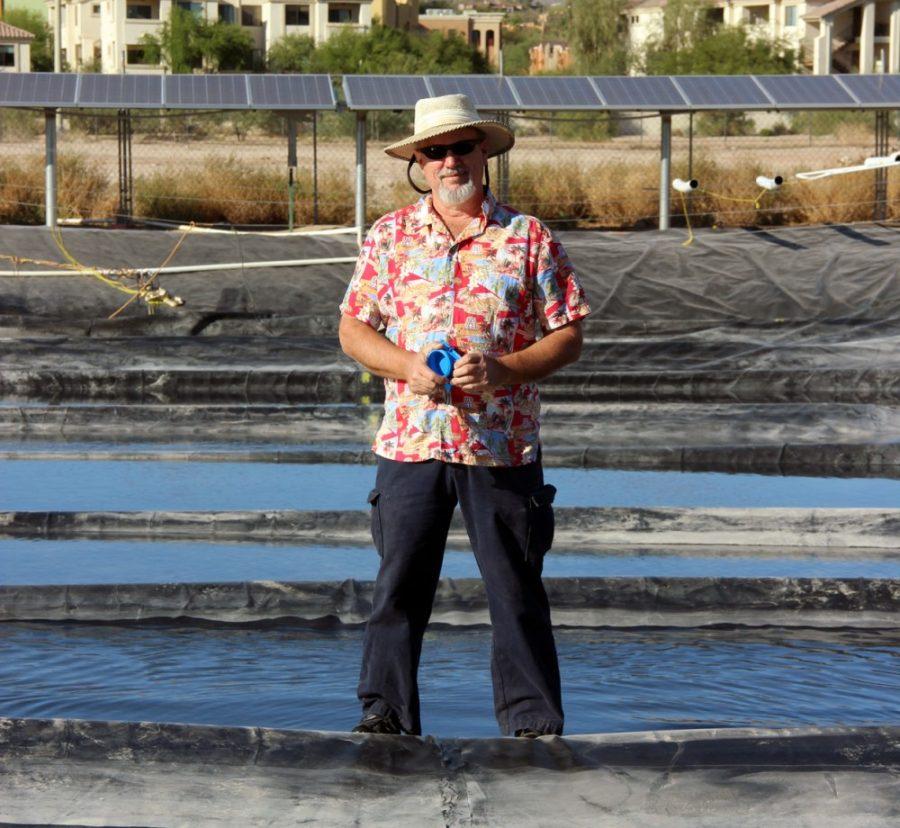Algae isn’t just the scum that accumulates in underused swimming pools— it can also be used to make biofuel, animal feed and plastics.
UA researchers are exploring new ways to execute the large-scale cultivation of algae as the UA leads the Regional Algal Feedstock Testbed, which seeks to optimize the outdoor cultivation of algae. The partnership was recently awarded $8 million over four years by the Department of Energy.
“The real holy grail here is for algal biofuel to be economically competitive with fossil fuels,” said Randy Ryan, assistant director of the Arizona Agricultural Experiment Station, a component of the UA’s College of Agriculture and Life Sciences.
Algae presents a more sustainable model for fuel production in that it removes carbon dioxide from the atmosphere through photosynthesis as opposed to fossil fuels, which, when burned, only add carbon dioxide to the air, Ryan said.
Along with fuel, algae can also be used as food for fish and other animals, including humans, and to create products such as bioplastics, Ryan added. Ryan is one of four patent holders for the Algae Raceway Integrated Design, a watercourse specifically designed to maximize algae growth.
The ARID system directs water along a serpentine course that churns the algae-rich water so that all the plant matter is exposed to sunlight, said Perry Li, an associate professor in the Department of Aerospace and Mechanical Engineering, who helped design the ARID bioreactor.
Once the algae is harvested from the water, the lipid, or fatty, material contained within the single-celled organisms can be isolated and used to create diesel and jet fuel. Meanwhile, the excess plant matter can go toward the creation of animal feed, among other things, said Kimberly Ogden, professor of chemical engineering and principal investigator for the project.
“You can convert [the lipids] into fuel using the same processes that you use to take oil out of the ground and change it into the diesel for your car,” said Ogden, adding that the process does take a few extra steps, including the removal of nitrogen from the lipids.
Ogden said another advantage of algae production is that it can be grown using some of the nutrients present in wastewater.
“You can actually kind of clean the wastewater,” Odgen said, “so you’re taking something people don’t want very much and using some of the stuff that’s in there to make fuel.”
Because it absorbs carbon dioxide as it grows, algae is a great alternative to fossil fuels and the “way to go in the future,” said Juan Sandoval, a chemical engineering junior and research assistant for the project. “We’re creating technology that not only releases CO2, but also absorbs the CO2, so it’s a complete cycle,” said Sandoval. “It feels awesome to be involved in something that’s going to have a positive impact globally.”
– Follow Mark Armao @MarkArmao









